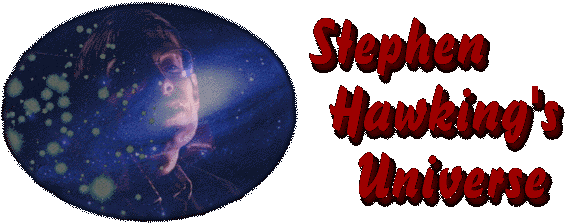 |
||
| PROGRAMME
6, "AN ANSWER TO EVERYTHING" UK Air Date (BBC 2): October 5th at 7.45pm, US Airdate (PBS): November 17th at 9pm |
||

Over the last hundred years our understanding of the universe has advanced far further than in previous centuries. We now know the universe had a beginning and how all the matter formed but there is still one outstanding question - how did the Big Bang begin? To understand this the two fundamental theories - quantum mechanics and general relativity - have to be united. Einstein, the inventor of general relativity and founder of quantum mechanics, spent the last years of his life trying to unite the two theories realising its importance. However he failed in his quest. Forty years later theorists around the world are trying to find an equation to describe a theory of everything. By matching theory and observation a clearer picture of how the universe evolved can emerge. Giant particle accelerators can create the same conditions that must have existed in the early universe. Alan Guth was one scientist who began to tackle the unbelievable mathematical balance needed to create the universe we know today. He was to propose inflation theory which could explain this problem but his theory had some flaws. Meanwhile on the other side of the world Andrei Linde had discovered the same idea and realising its flaws took it one step further finding a way to avoid the problems. Although inflation explains how the universe expanded it does not explain the moment of creation. Scientists still had to find the theory of everything. In their search for this theory they came up against the problem of the singularity which did not allow the conditions to be right for the birth of the universe. Sidney Coleman explains how with the use of quantum mechanics scientists including Stephen Hawking hoped to avoid the singularity. Hawking proposed a theory he called the "unbounded universe" in collaboration with a colleague, James Hartle. However this proposal could never fully be worked out and the search for the theory of everything carried on. In 1985 a new theory emerged. Michio Kaku was one of the first to work on the new idea of string theory. He explains that string theory unites the two theories of the big and the small with these tiny vibrating strings. A string could be anything - from gravity to a photon. However the full potential of string theory is still unknown. At the moment string theory still seems to be smarter than we are. Lee Smolin, an american cosmologist, came up with another theory which remains to proved right or wrong. His idea is that the twentieth century science is leading to the concept that the universe is a biological entity which creates and assembles itself, along the same lines as Darwin's theory of evolution. Andrei Linde also came up with an evolutionary theory of chaotic inflation where there are many universes and many big bangs. However both of the theories have failed to catch on. Hopes for string have been kept alive and Ed Witten, the driving force behind string theory, hopes that in the years to come more advancements will be made and that it may hold the answer to everything. In the next few years the successor to the COBE satellite, the Planck Explorer, will be launched and Neil Turok hopes that this will map the sky and prove which if any of these theories are right.  |
||
|